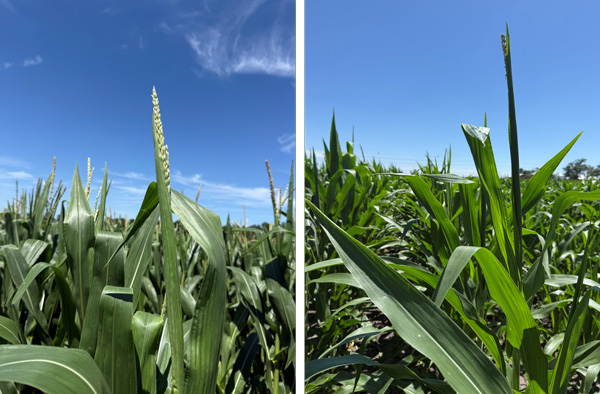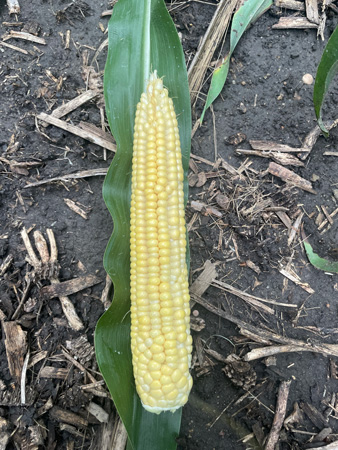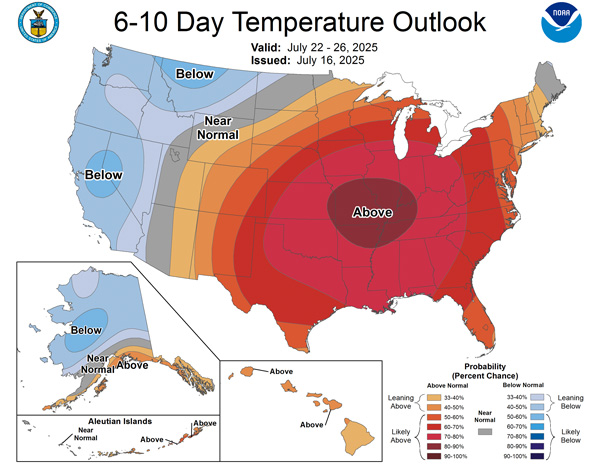Farmers and agricultural professionals from multiple states, including Kansas, are reporting pollination issues in corn linked to tightly wrapped tassels. This issue appears to be related to rapid growth syndrome that some corn fields exhibited earlier in the growing season. It also seems to be connected to a certain planting window (mid-April), so there could be instances where a hybrid with tassel wrap and reduced pollination shows normal tassel emergence and ear development in fields planted outside of that window.
What is happening?
In affected fields, tassels remain tightly wrapped in the upper leaves (Figure 1) and fail to shed pollen properly, potentially causing pollination issues leading to poor kernel set (Figure 2). Unpollinated silks continue to grow and may reach several inches in length and still be receptive to pollen for several days (Figure 3).
However, these long silks can block pollen from reaching later-emerging silks and will eventually cease to be receptive to pollen, especially when temperatures reach the upper 90s and above. The impact of delayed pollination is difficult to predict because so much depends on weather conditions during the first several days after pollination when potential kernel size gets set. That said, any delay in kernel set and fill usually does not bode well for corn yield formation, particularly considering the high temperatures predicted for the coming days (Figure 4).

Figure 1. Corn plants exhibiting tightly wrapped tassels.
.jpg)
Figure 2. Corn ear exhibiting pollination issues.

Figure 3. Corn ear depicting a longer pollination window where kernels developed at different times (note the younger, whiter, more translucent kernels).

Figure 4. Temperature outlook for July 22-July 26, 2025. Source: Climate Prediction Center.
What can farmers do now?
Unfortunately, there is nothing that can correct poor pollination. However, scouting fields and evaluating the kernel set can provide a clearer picture of the potential yield impact. This is especially important in fields that experienced rapid growth earlier this growing season. Performing yield estimates can help inform decisions about subsequent inputs, like fungicides, if the yield estimate is well below the target.
More information about how to estimate corn yield potential can be found in a companion article in this eUpdate.
Kraig Roozeboom, Cropping Systems Agronomist
kraig@ksu.edu
Tina Sullivan, Northeast Area Agronomist
tsullivan@ksu.edu
Logan Simon, Southwest Area Agronomist
lsimon@ksu.edu
Tags: corn pollination